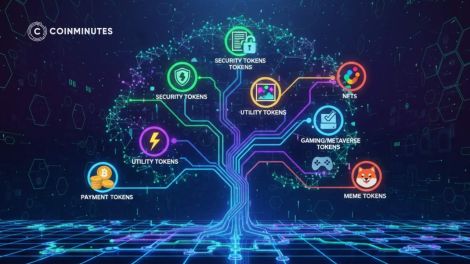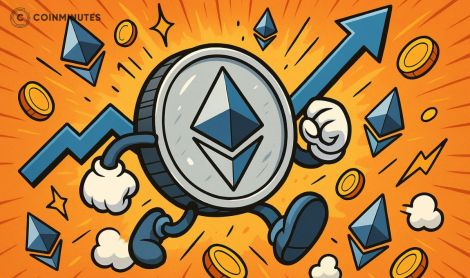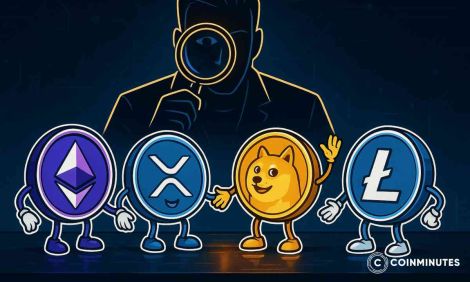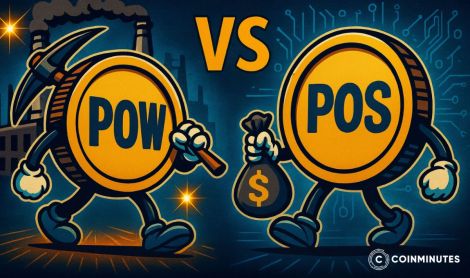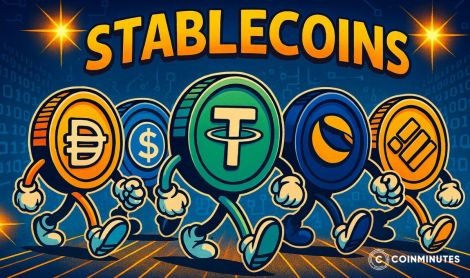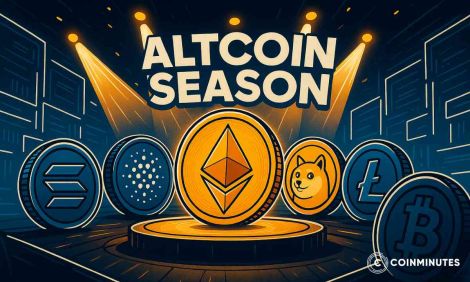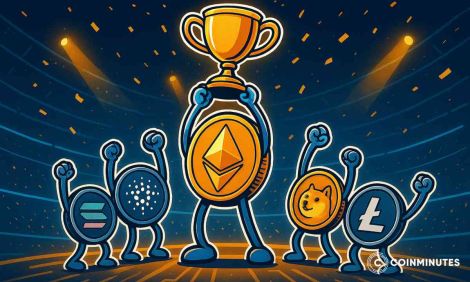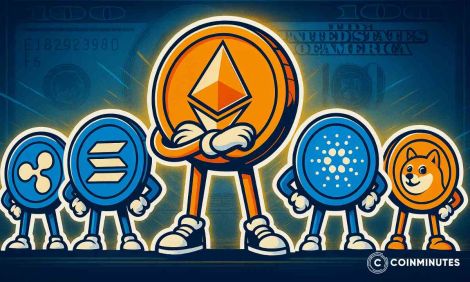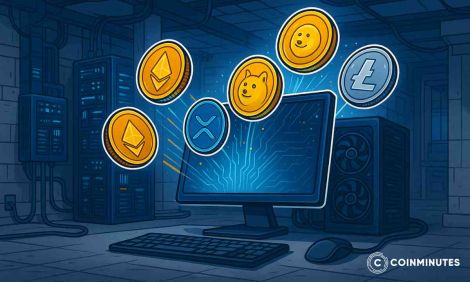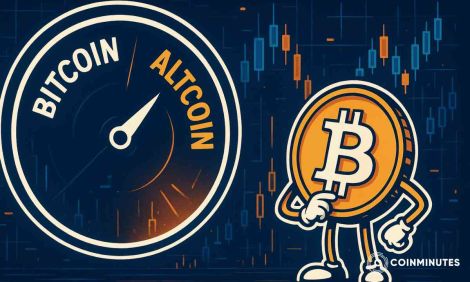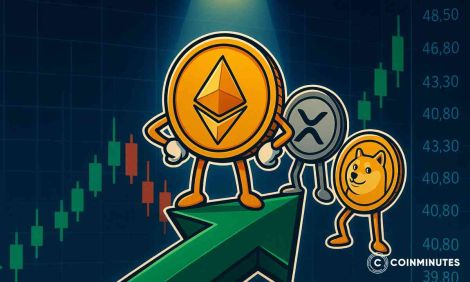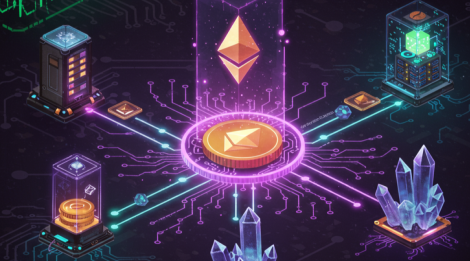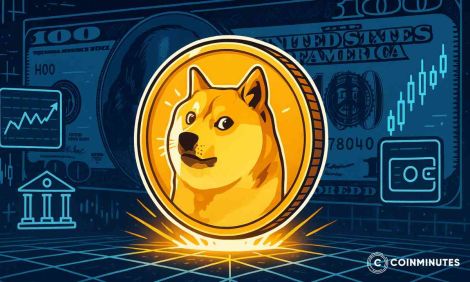A Guide to Chainlink (LINK): Web3's Oracle Backbone in 2025

TLDR: The Quick Scoop
-
Chainlink fixes the "oracle problem" by feeding real-world data to smart contracts
-
Big financial players like Canton Network are starting to jump on board
-
LINK has been hanging around $14-15 lately, with a floor near $13.50
-
Their new cross-chain system could hook up over 60 blockchains
-
Some experts think LINK might hit $25-35 by year-end (but take that with a grain of salt)
-
You can earn roughly 4-5% by staking your LINK
I've been watching Chainlink since they were just getting started, and they've blown up from a small crypto project into something much bigger. If you've checked the crypto rankings lately, you've spotted LINK in the top 20. But what makes it different from the sea of other tokens?
Unlike most crypto projects that are just digital money or hype machines, Chainlink actually fixes a real problem - the "oracle problem". It's pretty technical, but it's the key to making blockchains actually useful in the real world.
What Makes Chainlink Tick: The Basics
Let me break down what Chainlink actually does.
The Oracle Problem (And Why It Matters)
Blockchains are basically closed systems that can't peek at the outside world. They're great at handling transactions within their own system, but clueless about what's happening in real life.

Why blockchains need a window to the real world
Think about betting on sports using a blockchain app. The smart contract can take your bet money just fine, but has zero clue who won the game! That's where Chainlink steps in.
Chainlink builds a network of people running nodes who collect real-world info (sports scores, stock prices, weather data) and feed it to blockchains in a trustworthy way. Without this bridge, smart contracts would be pretty useless for most real-world stuff.
The LINK Token: How It Works
The LINK token makes the whole thing run. Node operators get paid in LINK for their services. They also lock up LINK as a security deposit to make sure they don't mess around with the data.
There will never be more than 1 billion LINK tokens, with about 580 million out there right now. Unlike some cryptocurrencies that keep printing new coins forever, LINK has a hard cap.
The staking program lets you lock up your LINK tokens in contracts that help secure the network. In return, you earn more LINK. Right now, staking pays about 4-5% a year, but this bounces around based on network activity and fees.
Staking locks your tokens for anywhere from a month to a year. Longer lockups pay better, but you can't sell if prices go crazy. I personally started with a short lockup before going all-in on longer terms.
Despite the nice passive income, staking isn't risk-free. You've got risks like smart contract bugs (though Chainlink's contracts have been thoroughly checked), missing out on selling during price spikes (since your tokens are locked), and possible program changes that might cut rewards.
For folks holding long-term anyway, these risks probably aren't deal-breakers given the returns - 4-5% plus whatever price growth happens beats most traditional investments. I see it as getting paid to hold something I planned to keep anyway.
The Faces Behind Chainlink
Sergey Nazarov started Chainlink with Steve Ellis, and Sergey's still running the show as CEO. Before Chainlink, he worked on tech startups, bringing that entrepreneurial mindset to the project.
The team has locked down partnerships with big names like Google, Oracle, and AWS over the years, showing they know how to play in the big leagues. They've grown from a scrappy startup to a team with serious engineering talent.
Market Snapshot: Where Chainlink Stands
Our CoinMinutes market analysts have been tracking LINK's position in the crypto ecosystem for years, and its trajectory tells an interesting story. Let's look at where it stands right now in terms of hard numbers and market sentiment.
The Numbers Game
The market cap stays around $10 billion, keeping LINK firmly in the top 20 cryptos. Daily trading volume runs between $700-800 million, so there's plenty of liquidity for traders.
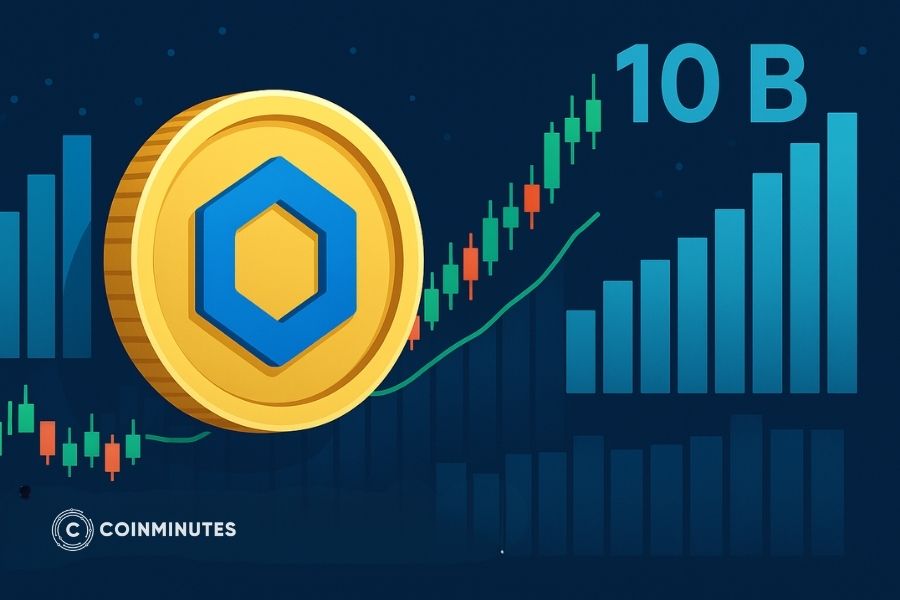
LINK holds strong with deep liquidity and steady demand
I've noticed that while LINK generally moves with the broader crypto market, it sometimes holds up better during downturns. This might be because it's actually useful rather than purely speculative, but don't kid yourself - it's still a wild crypto roller coaster.
One cool thing about LINK is that its price isn't just driven by hype. There's this metric called Total Value Secured (TVS) that shows how much value is protected by Chainlink oracles.
When they announce new partnerships or roll out upgrades like their Runtime Environment, you can often see the price respond. This connection to real utility separates it from projects that pump based on nothing but Twitter hype.
That said, LINK's price still gets pushed around by market moods and crypto cycles like everything else in this space.
How Chainlink Stacks Up Against Rivals
Several projects are trying to solve the same oracle problem:
|
Oracle Network |
Rough Market Cap |
What Makes It Different |
Who's Using It |
|---|---|---|---|
|
Chainlink (LINK) |
$8-9B |
The big dog with tons of integrations |
Hundreds of projects |
|
Band Protocol (BAND) |
~$750-800M |
Works across chains, cheaper fees |
Dozens of partnerships |
|
API3 (API3) |
~$400-450M |
Direct data sources, DAO structure |
Growing in DeFi |
|
Tellor (TRB) |
~$200-220M |
Different way of handling disputes |
Mostly smaller DeFi projects |
|
DIA (DIA) |
~$170-190M |
Focuses on financial data |
Niche financial apps |
Despite the competition, Chainlink dominates the oracle market. From what I've seen watching DeFi projects, most choose Chainlink even when cheaper options exist. It's like how everyone used to use Internet Explorer even when better browsers existed - once something becomes the standard, it's hard to shake.
Why Chainlink Matters: Real-World Use Cases
The CoinMinutes team has been documenting Chainlink's evolution from a niche crypto project to essential Web3 infrastructure. What really matters isn't the tech specs but how it's changing the way people and businesses actually use blockchain.
Big Companies Are Getting In
What gets me excited about Chainlink is seeing actual traditional businesses starting to use it. The Canton Network (which might eventually handle trillions in assets) represents the kind of institutional interest that could really drive long-term value.
I've been tracking SBI Digital Markets using Chainlink for market data and Ondo Finance plugging into their Runtime Environment. These tie-ups with serious financial players suggest Chainlink isn't just a crypto toy - it's becoming business infrastructure.
While competitors offer their own oracle solutions, none have matched Chainlink's momentum or credibility with institutions. And once businesses standardize on tech, they rarely switch unless something's seriously broken.
The Cross-Chain Bridge (CCIP)

CCIP: Building bridges across blockchain silos
CCIP might be the biggest development for Chainlink recently. This protocol lets assets and data move between different blockchains - potentially fixing one of crypto's biggest headaches: everything being split across dozens of separate chains.
I've played with early versions of CCIP. In real-world terms, it could:
-
Let DeFi apps work across multiple blockchains without custom bridges
-
Help users move their tokens between networks more safely
-
Give developers tools to build apps that work everywhere
The protocol creates natural demand for LINK tokens since you need them to power cross-chain transfers. If CCIP catches on, it could drive real usage-based demand beyond just speculation.
Chainlink and the DeFi World
From what I've seen watching DeFi platforms, Chainlink has become the default oracle for most protocols. Lending platforms, exchanges, and yield farming setups all rely on Chainlink's price feeds to work properly.
This creates a virtuous cycle - as DeFi grows, Chainlink usage grows, which makes the network more secure and reliable, which attracts more DeFi projects. It's like a snowball that keeps getting bigger.
Investment Talk: Strategies and Risk Management
Your strategy should match your risk tolerance, time horizon, and overall investment goals.
The Vibe Around Chainlink
The mood around Chainlink has been pretty bullish lately, boosted by announcements about institutional adoption and their Runtime Environment launch. Developer activity is still strong based on GitHub activity and community growth.
The partnerships with traditional finance players have gotten investors excited who see mainstream adoption as validation that Chainlink isn't just crypto fantasy.
How to Play It Based on Your Situation
If you're thinking about investing in LINK, your approach should depend on your timeframe and goals:
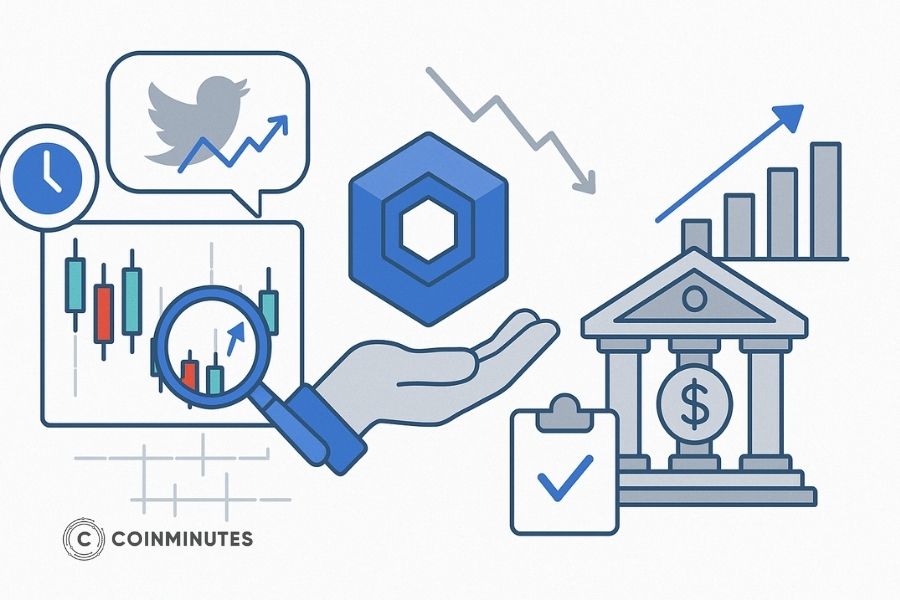
Different investors, different LINK playbooks
-
Day traders: Keep an eye on the charts, funding rates, and Twitter sentiment to find good entry/exit points. When everyone's either super bullish or bearish, that's often when things reverse.
-
Long-term believers: Consider buying during market dips if you believe in the project. This beats trying to time the perfect entry.
-
Institutional money: Focus on adoption metrics and reliability rather than day-to-day price action. The long game matters more than daily swings.
While Chainlink has solid fundamentals, remember that even blue-chip crypto projects can crash hard during market corrections. I've watched supposedly "safe" crypto assets drop 50%+ before.
If you're in it for the long haul (3-5+ years), consider spreading out your buys to get a better average price, look into staking for some passive income, and focus on accumulating more LINK rather than obsessing over the dollar value during market tantrums.
If you're trading, watch the support/resistance levels, check exchange funding rates for leverage imbalances, and use on-chain data to track big money flows. Just remember that chart patterns and indicators provide a framework, but crypto remains wildly unpredictable. I personally never risk more than 1-5% of my trading money on any single position.
For institutions, look at custody solutions like Fireblocks or Anchorage, sort out your compliance framework, and have a solid plan for managing risk given crypto's crazy volatility.
The Risks You Should Know About
Despite growing adoption and technical progress, cryptocurrency investments including Chainlink are still speculative and volatile. Regulation remains a wild card across global markets, with rules changing unpredictably.
While Chainlink dominates the oracle space now, competitors exist and technological disruption is always possible. Smart contract bugs, though rare in Chainlink's security-focused system, are still a potential threat.
The golden rule remains: don't invest money you'd be devastated to lose. Crypto should be the speculative part of a diversified portfolio for most people.
Should You Add Chainlink to Your Portfolio?
Before jumping into Chainlink or any crypto, ask yourself:
-
Do you actually get what Chainlink does? This article gives you the basics, but dig into their docs for the full picture.
-
Can you stomach the roller coaster? Chainlink still sees big price swings that might freak you out. I've watched it drop 30-50% during market corrections.
-
Are your financial basics covered? Make sure you have emergency savings and some traditional investments before diving into crypto.
-
How long are you planning to hold? Trading and investing require totally different approaches and mindsets. Be honest about your plan.
The most successful crypto investors do their homework, don't bet the farm, and match their strategy to their risk comfort level and time horizon.
Getting Started With LINK: A Practical Guide
If you've done your research and want to grab some LINK, here's how:
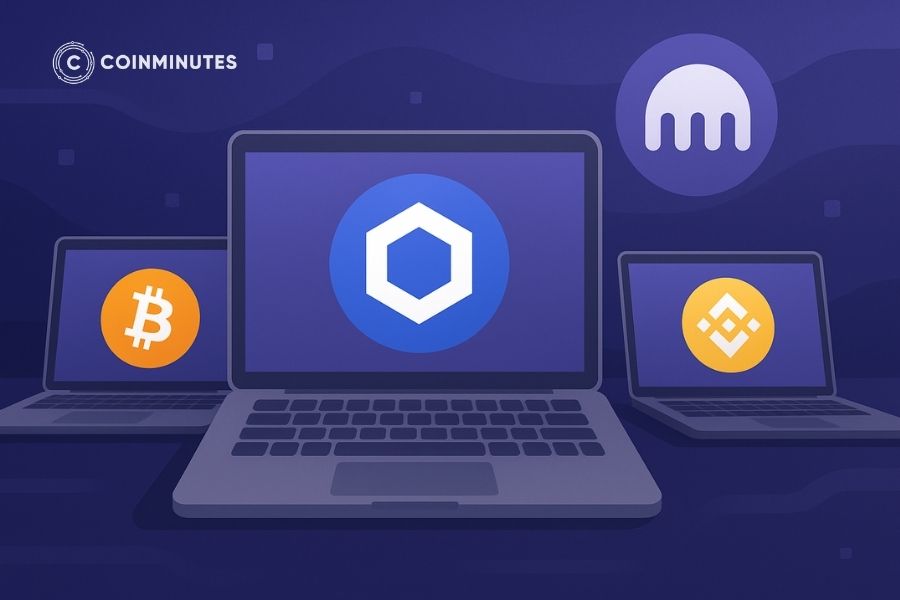
Trusted exchanges make getting LINK simple
-
Pick a solid exchange: Places like Coinbase, Binance, and Kraken all let you trade LINK. I use different exchanges to shop around for fees and trading pairs.
-
Verify your identity: You'll need to upload your ID and proof of address to satisfy the regulators.
-
Fund your account: Add money via bank transfer, credit card, or crypto deposit depending on what your exchange offers.
-
Buy your LINK: You can buy at market price or set limit orders. I prefer limit orders to snag better prices when the market's bouncing around.
-
Secure your stash: For anything substantial, move it to a hardware wallet like Ledger or Trezor. I learned this lesson the hard way after an exchange got hacked. Software wallets like MetaMask work for smaller amounts.
-
Consider staking: Look into staking options if you want to earn while holding.
If you already own LINK, here are some things to think about:
-
Check out staking through official programs to earn some yield while helping secure the network.
-
Consider rebalancing your portfolio as crypto values fluctuate. Sticking to target allocations forces you to "buy low, sell high" automatically.
-
Stay in the loop about project updates through official channels and crypto news.
-
Look into tax strategies for crypto holdings, including tax-loss harvesting during market dips.
Chainlink's Place in Crypto's Future
Chainlink is different from most cryptocurrencies. As oracle infrastructure, it solves a problem that's holding back blockchain adoption - connecting smart contracts to the real world.
The business adoption through partnerships with financial players positions Chainlink more as infrastructure than just another speculative token. CCIP further strengthens its role as the connective tissue for the multi-chain crypto ecosystem.
The current market sentiment around LINK reflects growing institutional interest, though price volatility is still part of the game, as with all crypto assets. Different investors will approach Chainlink differently depending on what they're trying to achieve.
Looking ahead, I'm watching adoption progress, regulatory changes, and competitive threats. Success in this space requires understanding the big trends rather than obsessing over every price tick.
Chainlink represents an infrastructure bet on growing DeFi and tokenized asset ecosystems - giving early adopters a seat at the table for financial tech transformation. The institutional adoption we're seeing might just be the first wave before broader integration as traditional finance dips its toes into blockchain tech.
Why We Started CoinMinutes (And Why You Might Dig It)
CoinMinutes started because our founder made a bunch of crypto mistakes and got obsessed with charts. We're not CNBC - just a bunch of crypto nerds who spend way too much time analyzing this stuff.
Our newsletter is basically this article but weekly, and includes:
-
Market updates without the fluff (I write these half-awake at 6am)
-
Where the smart money's moving (not just what influencers are shilling)
-
"FOMO Check" sections when everyone's hyping sketchy projects
-
Security heads-ups we think you should know
-
Deep dives on projects that haven't been hyped to death yet
If you made it through this whole article, you're exactly who we write for - someone who wants the meat, not just the sizzle.
Check us out at https://coinminutes.com/ if you're curious. Our free Friday emails are pretty solid. Hope to see you there!
 English
English
 Vietnamese
Vietnamese








